Anti-embolism stockings are not the same as compression stockings. Here’s why.
Anti-embolism stockings are often confused with regular compression stockings. Many of us have assumed that both anti-embolism socks and compression socks have the same functions. You may have even seen both terms used interchangeably.
It is true that both anti-embolism socks and compression socks exert pressure against the feet and legs; they work in a similar way. Both types of stockings also serve the purpose of improving blood circulation from the legs to the heart.
So what does make them different? And are anti-embolism socks right for you?
What’s the Difference?
Taking a look at each of these two types of hosiery, you’ll see that both of them come with a long list of benefits. It is important to understand the difference between anti-embolism stockings and compression hose so you can choose the sock that will benefit you.
Compression Stockings

In terms of function, regular compression stockings are made for daytime wear: from the moment you wake up till bedtime. Compression stockings and socks are essential for pregnant women, long-distance travellers, occupations that require standing for a long time and athletes.
Compression stockings also alleviate many cardiovascular conditions. They can prevent edema, aching and swelling of the ankles and feet, counter venous hypertension and boost lymphatic drainage, just to name a few functions.
Anti-Thrombosis Stockings
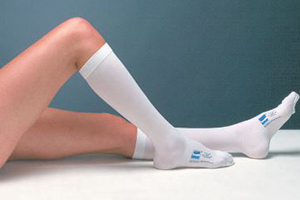
Anti-thrombosis stockings, on the other hand, are limited to immobile patients. A common brand of anti-thrombosis stockings would be TED stockings, or Thrombo-Embolitic-Deterrent stockings. Their only purpose is to prevent blood clot formation.
While compression stockings have many functions, that does not mean they are more advantageous in comparison to anti-clotting stockings. Each type of stocking has its own unique purpose, and one cannot be substituted for the other.
A good way to distinguish between the two is to remember that anti-embolism stockings are only worn in bed, while compression stockings are donned during the day. Each type of stocking will benefit the appropriate user .
Who is Eligible to Use Anti-Embolism Hose?
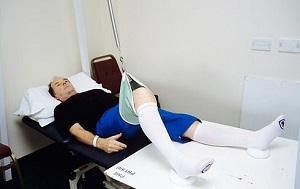
- Post-surgical patients with a long recovery period. The time frame for a patient’s recovery may be long, restricting them to long periods of bed rest. Their lack of movement makes them susceptible to developing blood clots in the legs. Anti-clot stockings come in handy while they recover.
- Patients with a high likelihood of developing deep vein thrombosis (DVT). You will have an increased probability of blood clots if you have experienced them in the past. Consequently, patients with a history of blood clots must use anti-embolism stockings during times of immobility.
- Patients suffering from acute or incapacitating medical conditions. Serious illnesses often confine patients to extended periods of bed rest because of the adverse effects of the disease and treatments. Thus, anti-embolism hosiery is indispensable during this period as well.
- Patients with mobility issues. Patients who are unable to move or who can only walk infrequently would benefit from anti-embolism stockings, as they have a higher likelihood of clot formation.
Why Are Anti-Clot Stockings Important?
To truly appreciate the importance of anti-thrombosis stockings, you’ll need to understand what the stockings prevent and the harmful consequences of not putting your anti-embolism hosiery to good use. Sarting with the name of these stockings, “anti-embolism” stockings, it is evident that the stockings prevent the formation of emboli.

What Is an Embolus?
An embolus (plural: emboli) is an obstruction inside your blood vessel that prevents or strains blood flow. The blockage can form as the result of:
- Air bubbles.
- Blood coagulation.
- Fat globules or foreign materials that get trapped or form in your blood vessel.

These are all capable of restricting the flow of blood within your vessels. This process of obstruction is called embolism.
An embolus caused by a blood clot is called a thrombus, and a thrombus is the most common type of embolus in bedridden and immobile patients. This is where anti-thrombosis stockings get their name from.
Anti-thrombosis stockings aim to prevent the formation of these blood clots in your legs, preventing deep vein thrombosis (DVT).
What is the Purpose of Blood Clotting?
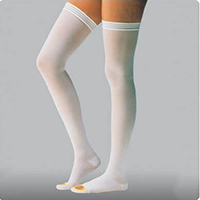
Blood clotting is a vital process, essential for your body’s well-being. It prevents excessive bleeding both internally and externally. When you have been cut, bruised or have received a severe wound, blood clotting saves the day.
The blood thickens to prevent leakage, infection and to enhance wound healing. In many ways, it is a relief knowing you will not bleed continuously when your body is prepared to use blood clotting as a protective mechanism.
When is Blood Clotting Dangerous?
Emboli become life-threatening when they dislodge from the blood vessels of the leg and move into the pulmonary arteries, a process known as pulmonary embolism. Pulmonary embolism will complicate your condition further and, in some cases, reduce your chances of survival if you are already suffering from a serious illness.
The likelihood of an emboli forming is increased because of inactivity. The blood moves at a decreased flow rate and becomes stagnate in the legs, putting you at risk of developing clots that can dislodge and move to your lungs. In such cases, it is critical to have anti-embolism hosiery.
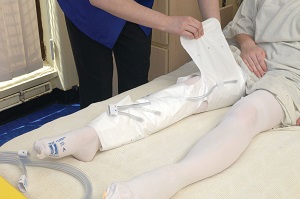
There is always a risk of blood clots travelling to your lungs if anti-thrombosis stockings are not being used. Next we’ll take a look at how blood circulation works and how it can affect the path of the emboli.
Blood Circulation In a Nutshell

In the body, veins and arteries function as one-way streets with the heart being their focal location. Veins bring blood to the right side of your heart while arteries take away blood from the left side of the heart.
Another important feature to note is that veins carry blood without oxygen (deoxygenated blood), while arteries carry blood with oxygen (oxygenated blood).
However, there is an exception: the blood vessels in the pulmonary (blood) circulatory system.
The Pulmonary Circulatory System
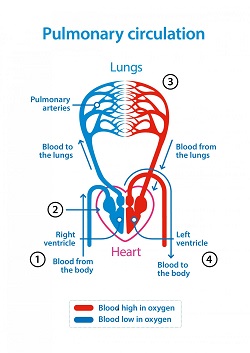
In this blood circulation between the heart and the lungs, the pulmonary arteries carry deoxygenated blood from the heart to the lungs. After becoming oxygenated by the air within the lungs, the pulmonary vein carries this newly oxygenated blood from the lungs back to the heart.
Consequently, blood clots formed in a deep leg vein will go through the right side of the heart then proceed to the pulmonary artery, eventually landing in the lungs. Things get a bit dicey once the emboli begin moving into the smaller blood vessels of the lungs known as capillaries.
Capillaries and Blood clots
The capillaries are tiny branch extensions of the main blood vessels (veins and arteries). Their branched form increases the surface area for maximum gaseous exchange when the carbon dioxide is released from the blood and oxygen is taken into the blood.
Since blood clots tend to be much larger in relation to capillary size, the clot is unable to move further into the capillaries. Unfortunately, the presence of this blood clot will wreak havoc on the lungs and the heart, preventing the blood from becoming oxygenated. A blockage of blood flow to the lungs occurs. When the blood cannot take up oxygen, the entire body begins to suffer oxygen deprivation.
If the blood clot is large, it may cause extensive damage to the lungs. The blockage will also:
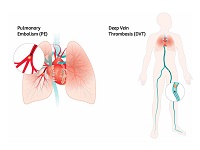
- Restrict your flow of blood to the heart.
- Reduce oxygen levels in your blood.
- Increase the pressure on the right side of your heart. The heart begins to work extremely hard in an effort to pump blood despite the irregularities of the pulmonary circulation.
- Weaken your overworked heart as it pumps the blocked blood from the lungs back to the heart.
Anti-Clot Stockings and Your Circulatory System
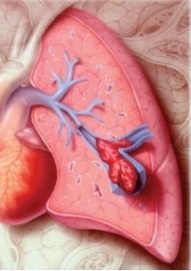
If immobility leads to clot formation, then mobility is an anti-embolism activity. Mobility is crucial for your cardiovascular health. But when mobility is not an option for you, anti-embolism stockings are the best preventative method.
Anti-Embolism Stockings Fight Gravity
Aside from mobility, gravity is another factor affecting circulation from the legs to the heart. Gravity acts as an antagonist in leg blood circulation and the anti-embolism process. It pulls blood towards your feet as your heart wrestles to keep blood flowing upward; this struggle is further amplified when you are immobile for long periods.
Your blood flows down to your feet since your lower leg favors the direction of gravity while you rest. It is a relief, though, to know that anti-thrombosis stockings work effectively against gravity, even when you are at rest.
Anti-Embolism Stockings Improve Circulation
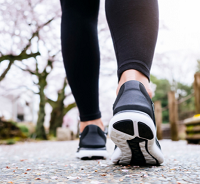
Frequent movement improves blood circulation by keeping the blood flowing. However, you may be unable to move for weeks or months at a time, depending on your condition. Your blood will pool in the lower extremities, making it harder to pump blood to the heart.
This poor circulation leads to the coagulation of the blood left stagnant in your veins for long periods of time, leading to DVT. These clots typically form in the deep veins of your feet, calf or thighs when anti-clot stockings are not used as a prevention method.
The veins have valves to prevent the back flow of blood when your blood pressure becomes too low. Lack of movement will aggravate low blood pressure and reduced blood circulation. The work of anti-thrombosis stockings is integral in producing and maintaining the pressure that keeps your blood flowing forward in times of inactivity due to sickness.
Anti-Embolism Stockings Prevent DVT
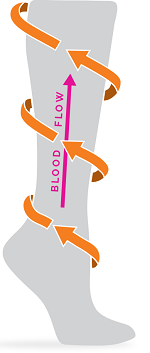
Anti-embolism stockings also prevent the formation DVT and pulmonary embolism as you go through treatment, in your post-surgery recovery journey and as you manage your non-ambulatory condition. Clots will no longer be a cause for concern for you while receiving medical care as anti-clot stockings will maintain your venous leg circulation.
How Anti-Embolism Hose Work
Anti-embolism stockings provide additional external pressure to your distended veins, constricting their size. The size reduction produces the needed force to push your blood up to your heart.
Good quality anti-clot stockings will have varied pressure levels along the length of the stockings. A specific level of pressure at each point of contact with the leg enables a continuous flow of blood to the heart, thereby preventing clot formation.
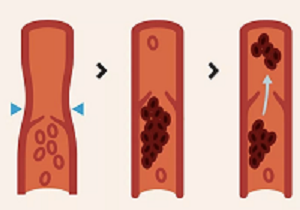
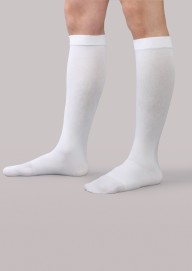
Anti-clot stockings have only one function: to maintain proper venous flow. The stockings do not rectify underlying vein problems. They do not dissolve clots that have already formed in your veins prior to the use of the stockings.
If you have any pre-existing circulation complications, your physician should be informed prior to your surgery so the appropriate medical intervention can be made.
Features of Anti-Clot Stockings
There are several variations of anti-embolism stockings available. Depending on your medical condition, your doctor or nurse will advise which option is best for you.

Knee-High or Thigh-High
Anti-embolism stockings, unlike ordinary compression stockings, come in only two different lengths. The lengths available to patients are either the knee-high anti-embolism hosiery or thigh-high stockings.
The length of stockings given depends on your medical condition. For anti-embolism stockings, each length has a specific purpose:
- The knee-high anti-clot stockings act on the feet, ankles and calves.
- The thigh-high anti-thrombosis stockings work on the thighs and the lower legs.
Knee-high anti-embolism stockings are easy to don and take off, while thigh-high anti-clot stockings can be more challenging to apply. A caretaker or medical staff may need to assist you.
Compression Ratio Options
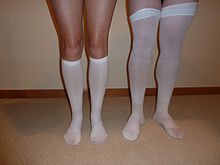
Regarding compression ratios, there are a few differences between anti-embolism hosiery and regular compression stockings. However, for both types of stockings compression is measured in millimeters of mercury (mmHg), a unit of pressure.
Anti-thrombosis stockings have different pressure ratios than compression stockings. Notably, they have a shorter compression range.
For regular compression stockings, the range begins at 5mmHg and ends around 42mmHg. You will often see these stockings in three standard measurements: 15-20mmHg, 20-30mmHg and 30-40mmHg.
The pressure level of anti-thrombosis stockings, on the other hand, tops out at 18mmHg. This lower pressure level is meant to prevent the development of thrombosis while the wearer is at rest.
Graduated Compression
Anti-embolism stockings will apply the lowest amount of pressure at the top of the stockings and the highest level of pressure at the bottom of the leg. Therefore, a pair of 10-18mmHg knee-high anti-embolism stockings will have the lowest pressure (10mmHg) located at the knee region of the stocking and the highest pressure (18mmHg) in the ankle portion of the sock.
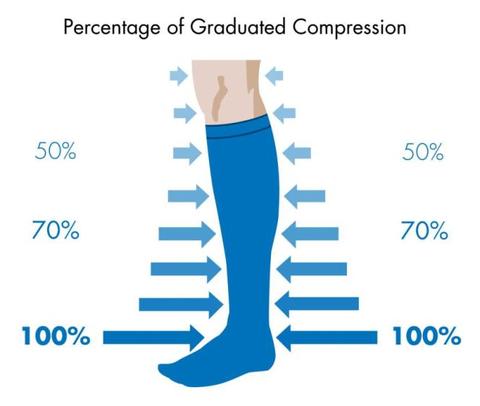
The pressure is usually intense around your feet to push the blood upwards. This pressure lessens gradually as you move along the length of your leg, simplifying the work for your heart. The midsection of anti-clot stockings will have pressure levels in decreasing order or graduated compression.
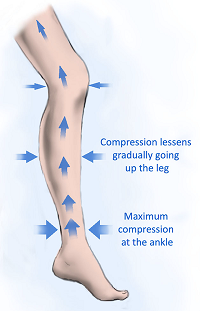
The graduated compression factor is a mark of quality in anti-embolism stockings. Without this attribute, the stockings will not function properly.
The specific pressure levels along the anti-embolism sock apply varying degrees of force along the veins of your leg. The pressure variation also maintains a steady flow of blood, reducing the possibility of blood clotting.
How Are Anti-Embolism Stockings Donned?
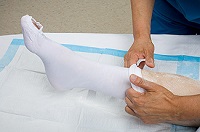
Since anti-embolism hose will be needed when you are incapacitated, a medical practitioner or caregiver will likely be in charge of clothing you as you recuperate. You can also use a device to help in wearing and removing the stockings.
Your leg length will be measured and a size determined from the measurements. The sock length and compression ratio will also be confirmed by your physician after your medical prognosis is determined.
Tips For Wearing Your Anti-Clot Stockings
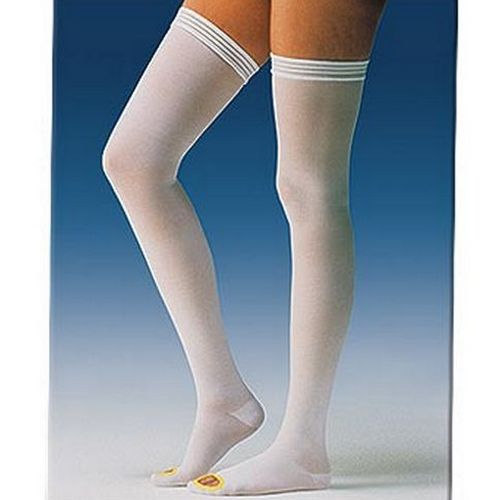
- You will wear the anti-clot stockings throughout the duration of your stay in the hospital and/or after discharge, depending on your condition (if you are able to walk or move after treatment).
- Having extra pairs on hand will help with changing and cleaning the stockings.
- Additionally, the anti-embolism stockings should not be rolled down while your are in bedrest or removed for more than 30 minutes.
- During this period of use, you will also need to avoid oily or greasy topical applications such as body lotion, as they will interfere with the functioning of the anti-embolism stockings.
Now That You Understand Anti-Thrombosis Stockings…

While anti-embolism stockings are compression gear, they are not regular compression stockings. The light-weighted anti-embolism stockings are meant to improve your circulation as you recover or manage your illness. These stockings will ensure your leg circulation remains healthy throughout your recovery.
Anti-embolism stockings remove all that drama regarding blood clots, making your healing journey a tad bit easier. If you are suffering from an incapacitating condition, anti-clot stockings will prevent complications that can interfere with your quality of living.
Consider how anti-embolism hose can safeguard your health and comfort.
This page last updated December 16, 2022
